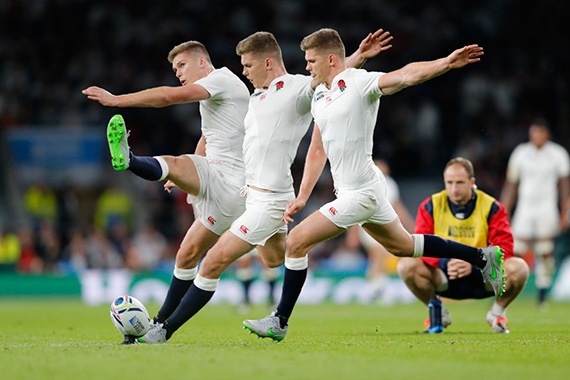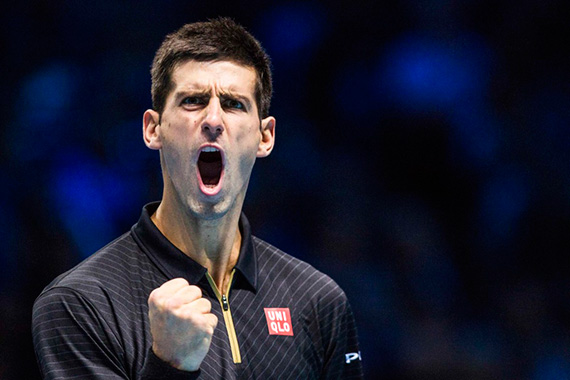Meet Sam Todd, a London-based photographer who’s photographed some of the world’s biggest competitions like the Tour de France and the Rugby World Cub. Sam’s developed a sports photography style that not only captures the epic passes and scores in a 90 minute game, but the story and personalities behind the game, too. Read on to learn this internationally published photographer’s advice for getting your best photos in sports.
1. Preparation is key
Know the sport you are photographing, or learn it. You must understand what you’re photographing in order to illustrate it. Research the game and the players, find out who is hot in the media, find out who is most likely to have a big impact on the game or score the winning try in the corner.

By Sam Todd / Sportpix
2. Make your own luck
Of course there is luck in sports photography, but more often than not luck is made by the photographer. Sport photographers very rarely miss an important moment, because they are always looking for the unexpected, anticipating the winning move or defining moment, and they make sure they are in the right place to capture it.

By Sam Todd / Sportpix
3. Setting the scene
It is always worth considering photographing aspects other than the game, such as the crowd beforehand showing anticipation, or afterwards joy or devastation. Sport is my favourite thing to photograph because there are always so many emotions on display. One of my favourite photographs from the Rugby World Cup was taken by a photographer called Eddie Keogh. If you haven’t heard of him yet, take some time to look at his work. The picture was of Japan scoring a try against South Africa; Eddie did not have the best angle on the try itself, so he slipped his focus to the crowd behind celebrating the try, which made a much more interesting photo than the multitude of other pictures of the try.

By Sam Todd / Sportpix
4. Position is key
It depends on what the sport is and how you want to cover a game. If you’re photographing rugby or football and you want to cover both teams, I would suggest roving, following the play as it happens, running up and down the pitch, ideally in front of the play. You might miss a run-away try or goal but you have the opportunity to get closer to the play. It’s also worth investing in a pair of knee pads—not the most fashionable photography accessory but needed. The other option is to stay static at one end and maybe change at half time depending on the coverage you’re looking for. Most importantly, shoot from a low angle to empower your subjects.
5. Backgrounds
This is what makes a good sports picture into a great one. Try to keep your backgrounds clean and as straight as possible. Tacky signage boards are a common theme in sports photography, but try to avoid them, or open up your aperture to ensure they are out of focus.
6. Motion and how to show it
Sometimes the best way to illustrate a sport is not capturing it with a super fast shutter speed; sometimes you want to drag the shutter. A lot of people make this mistake when photographing motor sport. Cars tend to look like they’re standing still if you photograph them head on at 2000th of a second, you can’t see any movement. Try photographing them side on at a 15th–60th of a second depending on the subject’s speed, and pan with it. You will then capture the movement of the background or the wheels of the car.

By Sam Todd / Sportpix
7. Focus modes
Vitally important, remember that as your subject is moving you need to change the focus mode so that your camera knows it needs to constantly track your subject as you shoot. Hopefully you have read the manual; it’s boring but it is also very helpful.
8. Keeping tight
The aim of sports photography is to produce exciting, emotive images to illustrate the event. Try to use a longer lens as it will enable you to get that empowering looking sports shot. If you don’t have a long lens carry on reading, but also consider renting a suitable lens. It may cost money but it may be more justifiable than buying a new lens, and if you can get a couple of good pictures for your portfolio from it, then it’s got to be worth it.

By Sam Todd / Sportpix
9. Equipment
I don’t want to talk too much about kit as the internet and most photography forums in my opinion put too much emphasis on lenses and f-stops. If you don’t have a massive 400mm zoom wait for the action to come to you or maybe think of sports that you don’t need a huge lens to photograph. One of the most satisfying sports to photograph is tennis; you can only photograph one person at a time and you can get pretty close so you don’t even need a massive lens.
10. Don’t worry about the bad ones and stick with it.
The most important thing I can say is get out there and shoot as much as you can. Then put your work on a platform such as EyeEm for people to see and give you advice as to how you can improve. One of the biggest mistakes I made was not showing people my work when I started, The internet is full of people willing to give free advice. Some of it you might want to ignore but a lot of the time people give pretty solid advice on how to improve.

By Sam Todd / Sportpix
The way I look at it is you can only get better so when you take a bad photo, work out why you feel it was bad, learn from it, and try not to do it again.
About the Author:
Sam Todd is a 25 year old freelance photographer, his style is documentation, seeing and telling the whole story. He has most recently been involved in photographing The World Power lifting Championships, The Rugby World Cup and the Tour de France.
EyeEm is a community & marketplace for real photography. Looking for more hacks and tutorials? Check out their tips and tricks. If you’d like some more inspiration of great sports photography, EyeEm also has a curated Sports album.
Like This Article?
Don't Miss The Next One!
Join over 100,000 photographers of all experience levels who receive our free photography tips and articles to stay current:






Leave a Reply